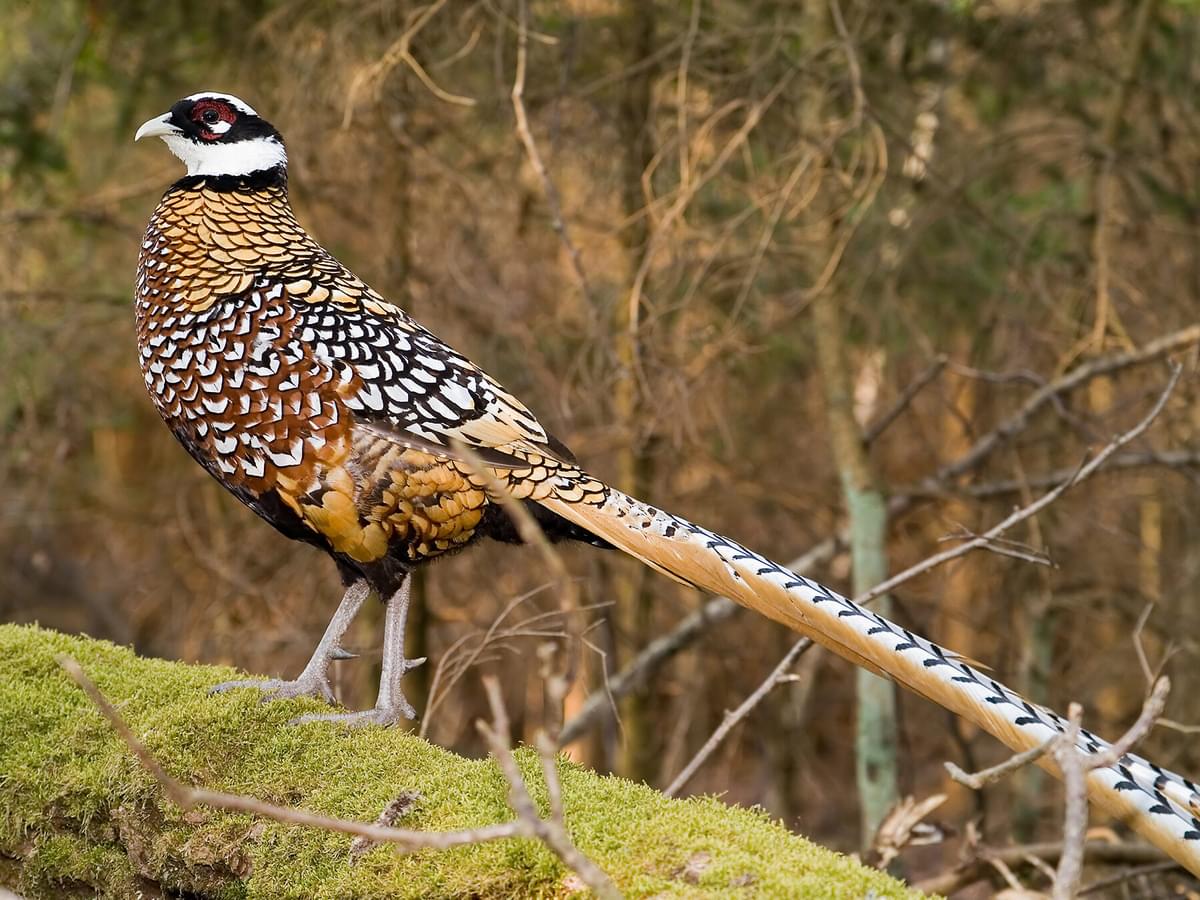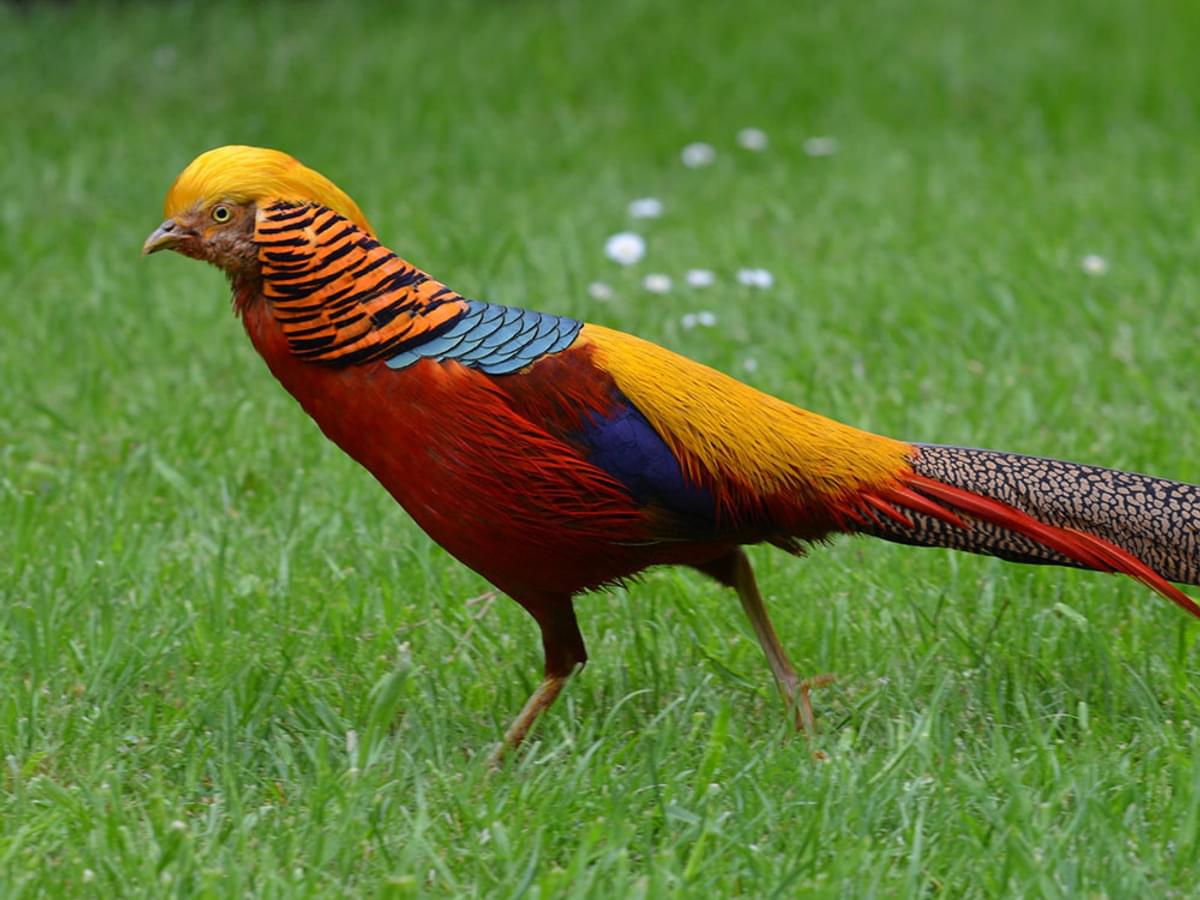Pheasants are year-round residents in the UK, which can be spotted across the majority of the country. As well as the UK, the common pheasant can be found across most parts of Europe and North America.
The most common pheasant, the ring-necked pheasant, is mainly seen throughout the countryside, foraging for food on the edges of woodlands and hedges. So let's get into it, how long do pheasants live?
On average, pheasants live for just one to three years. Female pheasants generally have a greater chance of living towards the upper end of this average, but males often have shorter lifespans due to being hunted and shot.
Although pheasants have a short life expectancy, they can easily live over ten years in captivity, with one male pheasant still alive today, at the ripe old age of 18.
The average lifespan does, however, vary, depending on the species of pheasant, with species like the Reeves's Pheasant having a life expectancy of around nine years, and the Golden Pheasant around 5 to 6 years in the wild.

Pheasants hart relatively short lives, and only generally live between one and three years
What is the typical lifespan of pheasants?
The typical lifespan of pheasants does slightly vary across the different species. Ring-necked pheasants have one of the lowest expected lifespans (males in particular) due to being hunted.
Common Pheasant lifespan
The majority of common pheasants in the wild live 1 - 3 years, but in captivity, there are confirmed cases of these birds for living 27 years.
Golden Pheasant lifespan
In the wild, Golden Pheasants usually live around five years, but the oldest recorded is 13.4 years in captivity.
There are anecdotal reports claiming these pheasants can live up to 20 years, which seem plausible.
Reeves's Pheasant lifespan
The Reeves's Pheasant has been recorded at ages of over nine years.

Reeves's Pheasant

Golden Pheasant
How long do pheasants live in the wild?
In the wild, the average lifespan for a pheasant is usually between one and three years. The annual survival rate for adult females is between 21 - 46%, whereas males have just a 7% chance of survival.
The significant difference between male and female survival rates is linked to the fact that only males get hunted, which drastically brings down the chance of survival.
Pheasants in the wild have quite a few predators, so those that don't get killed during a hunt, are usually predated on by various birds of prey or mammals, such as foxes.

Male (cock) and female (hen) pheasants in the breeding season
How long do pheasants live in captivity?
In captivity, pheasants, on the whole, have a much greater life expectancy, usually ranging anywhere from 10 to 18 years. The oldest recorded common pheasant living in captivity reached 27 years.
Like other birds in captivity, Pheasants generally live longer as risks like predation, infection, disease, and harsh weather conditions are almost entirely irradicated. Food is also always available, which is yet another factor that contributes towards a longer lifespan.
What is the life cycle of a pheasant?
Most pheasants lay their eggs from early April through to early June. Nests are pretty simple and are constructed in tall grass, shrubs or weeds. Each egg is laid about every 1.4 days, and clutches usually contain 7 to 15 eggs.
Incubation: Pheasant egg incubation takes on average around 23 days, but in some cases, it can be longer, extending to 28 days. Females pheasants solely incubate the eggs.
Hatching: The hatching process takes around 12 hours. After tapping away gently for a few hours, pheasant chicks will kick away a large piece of the shell before emerging into the world. Once they're out, the chicks lay quietly in the nest.
Leaving the nest: Pheasant chicks are born covered in down, with their eyes completely open and are able almost immediately to leave the nest. Once they leave the nest, they'll follow the female and mostly self-feed.
Juvenile stage: Pheasant chicks will start their pre-juvenile moult at just ten days old. They'll remain with the adult female for up to 80 days before they go off to their wintering areas, and become fully independent.
Adulthood: Pheasants become sexually mature once they reach about one year old after hatching. They then will go off and try to establish their territories and then attempt to breed each year.

Juvenile Common Pheasant
How do most pheasants die?
For male pheasants, one of the most common causes of predation is being hunted by humans. Females and males who avoid being shot, are often predated by hawks, eagles, owls and foxes, usually during the winter.
Most pheasants get predated during the winter, particularly after dispersal from winter cover. During the spring and summer, nesting hens (female pheasants) are often predated whilst on the nest and chicks are also often targetted.
Before 1950, the success rate of pheasants eggs hatching exceeded 50%, but this number has significantly dropped in more recent times. One of the main reasons for this is an increase in nest predation.
What are the predators of pheasants?
Pheasants nests and chicks have quite a few predators, as do adult pheasants. The main predators of adult pheasants are humans (hunting male pheasants), birds of prey, and mammals like foxes.
Raptors will take adults from both the ground and in flight.
In the UK
Nest predation
In the UK, pheasant eggs, and occasionally nestlings, are mainly predated by foxes and corvids (mainly carrion crows). Other nest predators include badgers, rats, stoats and hedgehogs.
In one study of pheasant nest predation, factors such as the habitat type, time of year or age of the hen didn't directly influence the nest predation rate.
Adult pheasants
A large portion of male pheasants are hunted and shot during the shooting season. Female pheasants (hens) are often shot but are less likely than males overall. Outside of the hunting season, the main predators for pheasants are foxes.
Common Buzzards, Honey Buzzards, Northern Goshawks, Northern Harriers and Peregrine falcons are all known to try and occasionally predate adult and young pheasants.

Common Pheasant in flight
In the US
Nest predation
In the US, nest predators include many species of birds, including Ravens, Blue Jays, American Crows, Grackles and Magpies. Foxes, coyotes, badgers, raccoons and other mammals predate pheasant nests.
Adults and young pheasants are predated by:
Mammals
- Red fox
- Coyote
- Badgers
- Mink
- Weasel
- Raccoon
Birds
- Golden eagle
- Hawks
- Snakes
- Snapping turtles
- Great horned owls

Close up of a pheasant
How old is the oldest pheasant?
The oldest recorded living ring-necked pheasant (common pheasant) was 27 years old.
This age record is cited in The Animal Ageing and Longevity Database.
How long can pheasants live without food?
During the winter, pheasants can live off their substantial fat reserves for several days if required. But after a few days, it would be highly likely that the pheasant would begin to starve to death.
This behaviour of living off their fat reserves generally only occurs in the winter, when food sources are less abundant.

Female and male pheasant in snow during the winter
Can pheasants survive winter?
Most pheasants rely on surviving winter by finding suitable and safe winter cover. These winter cover areas usually are grass cover for roosting at night and trees and shrubs for foraging during the day.
Pheasants build up a pretty substantial fat reserve, which usually gets to its highest point during January.
In harsh winters, pheasants need to burn around 25% more energy to survive, which means they need to find more food whilst steering clear of hungry predators.
Mild weather conditions are what pheasants thrive in, especially during the breeding season. Rain helps the nesting cover they need to grow and attracts plenty of insects for the chicks to feed on.
